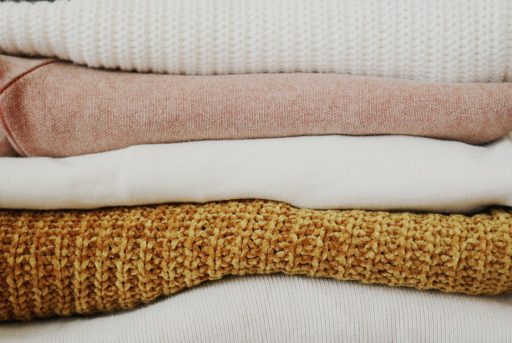Towels carry a lot more than water; they collect oils, dead skin, and tiny bits of the day, and they change over time in ways that matter. A useful rule of thumb helps people keep a fresh stash in rotation without wasting money or resources.
Pay attention to how a towel feels, how it smells after washing, and whether it still soaks up water the way it used to. The sections below outline practical signs, washing effects, fabric notes, care tips, and ways to repurpose items that have reached the end of their useful life.
How Often Should You Replace Towels?
Many homeowners swap bath towels every two to three years when they are used often and laundered weekly, and lighter use can stretch that interval. The timeline shifts with quality and routine, so high end loops and dense fabrics last longer than thin, bargain options.
Tracking performance makes more sense than counting months, because a towel that looks fine might fail with less absorbency or harbor odors. If a towel loses its function or comfort, it is time to move it out of daily duty.
Signs Your Towels Need Replacing
A towel that no longer soaks is an easy signal to act, since a damp cloth that wipes and leaves moisture behind is not doing its job. Another clue is a persistent musty scent after washing, which often points to trapped residues or damage in the fibers that soap and heat cannot fix.
Visible thinning, flattening of loops, loose threads, or holes tell the same story and make replacement the sensible choice. Color fading and rough texture also reduce comfort and suggest the fabric has reached the end of its useful stretch.
How Washing Affects Lifespan
Laundry habits shape a towel’s life more than any single purchase decision, because rough cycles and abrasive detergents wear fiber strength down over time. Hot water and heavy spinning speeds can speed up thread fatigue, while repeated use of fabric softener coats yarn with waxy films that cut soak power.
A gentle machine wash with moderate detergent frequency, followed by full drying, helps preserve both feel and function in many fibers. Treat laundry steps like a small investment that pays dividends in longer use and fewer replacements.
Fabric Types And Durability
Cotton in multiple grades shows wide variance, where long staple cotton such as Egyptian or Pima tends to keep strength and absorbency longer than short staple varieties.
Turkish cotton is known for a plush feel that often ages gracefully while remaining quite thirsty for water, and microfiber styles dry fast and may be better suited for certain chores than for long soak sessions.
For those seeking both style and performance, premium options like missoni bath towels combine luxurious fibers with superior durability.
Natural fibers like bamboo have soft hand and good absorbency, but their durability can vary with weave and finish, so match choice to use. Price often tracks quality but not always, and a careful touch test and weight check can reveal lifespans faster than labels.
How To Extend Towel Life

Rotate a towel set so individual pieces do not see daily use for long stretches, because regular alternation spreads wear across the group and keeps each item performing.
Wash in warm or cool water with a measured amount of detergent and skip fabric softener to preserve loop integrity and soak power, and toss in some white vinegar once every so often to help lift residue.
Dry fully in air or a dryer setting that is gentle, because lingering dampness invites odors and fiber breakdown that shorten service life. Repair small loose threads and mend holes early, since a stitch or two can add months or years before a full swap is needed.
When To Recycle Or Repurpose
Once a towel can no longer meet daily needs but still has substance, cut it into rags for cleaning, gardening, or pet use where softness is less critical and absorption still pays off.
Donate lightly worn towels to animal shelters, community centers, or charities that accept linens, because many places appreciate usable textile donations even when they would not work in a primary bathroom.
For fibers that are too worn for reuse, search for textile recycling programs in your area that accept old linens and turn them into new products or industrial materials. Creative repurposing reduces waste and gives a second life to fabrics that have served well.
Signs To Watch Involving Hygiene And Safety
Persistent dark spots, visible mold growth, or an ongoing sour odor after a full hot wash and complete drying point to contamination that can be hard to remove. If a towel causes skin irritation or leaves flaking residue on the body, stop using it for personal drying and shift it to non body contact tasks before replacing it.
Pets often reveal towel issues fast because they seek out soft spots and will avoid rough or smelly cloth, and their reactions can flag a problem you might miss. When in doubt about bacterial growth, prioritize safety and swap in a fresh set, because a clean towel should aid health rather than hide a problem.
Practical Buying Tips To Stretch Value
Choose towels with a good balance of weight and loop density rather than chasing a single number on the label, and hold a sample to test how it feels when you squeeze water from it in your hand.
White or light neutral tones ease stain treatment and allow bleaching when needed for sanitation without wrecking patterns, and solid color purchases are often easier to match in future buys.
Buying a few extra pieces at once helps with rotation and lowers the odds of running out between wash cycles, and replacement in small batches keeps the bathroom usable while older items retire.
Think of towels as a small household fleet that benefits from occasional upgrades and steady upkeep rather than sudden, large purchases.













